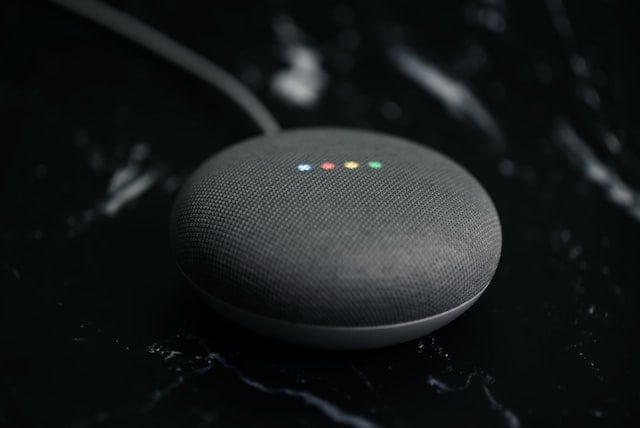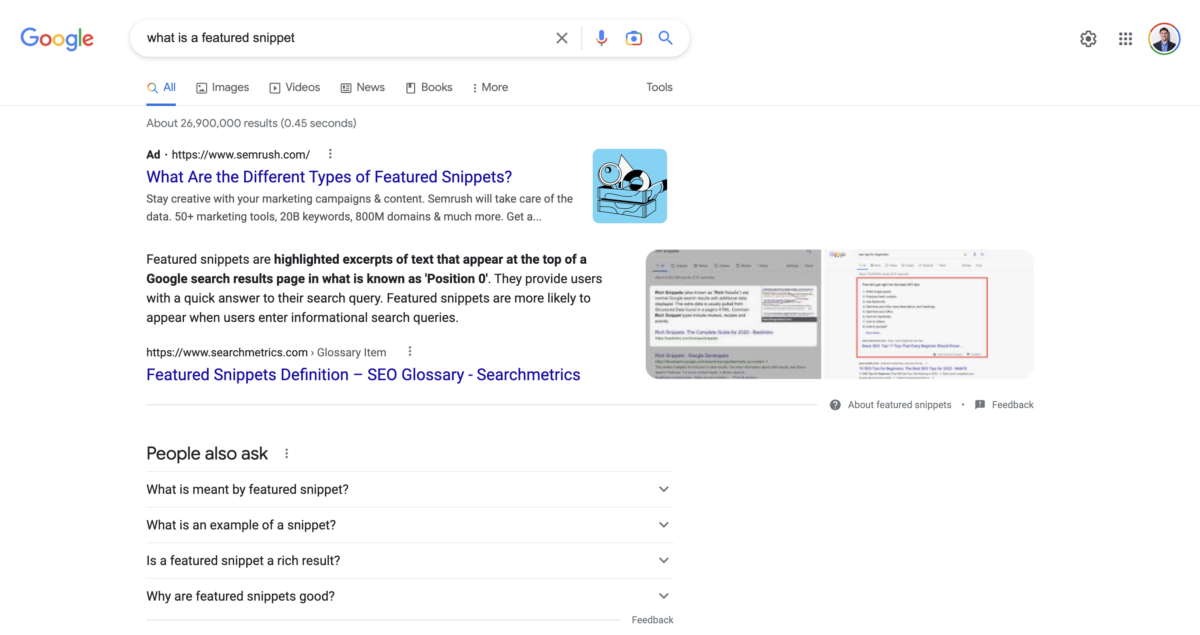10 Things to Implement TODAY!
The rise and dominance of voice assistants like Siri, Alexa, and Google Assistant, have given voice technology a solid ground to thrive in the search engine landscape. As a result, a growing percentage of consumers now prefer to voice out their queries instead of typing them into search engines.
From smartphones to smart speakers, conducting web searches with voice technology is the new normal, owing to its speed and convenience over text search. As a business owner, you must pay attention to this trend if you want to grow your business online organically, meeting consumers at the point of their needs.
This article provides insights on how people use voice to search and how you can implement voice search SEO in your already-existing marketing strategy.
How People Use Voice To Search

According to PricewaterhouseCoopers, 71 percent of American consumers prefer to conduct queries by voice rather than typing, and three out of every four are using their voice assistants at home. The survey also shows that 65 percent of adults between 25-49 years talk to their voice-enabled devices at least once daily.
They speak directly into their devices with voice recognition technology, then the installed search engine or application runs the query and provides relevant results.
Furthermore, people use voice technology to perform online searches in diverse ways. Here are some examples of how people use voice search:
- To find information, such as asking for directions or looking up the weather forecast, while on the go.
- To complete tasks or navigate specific applications on their devices, especially when their hands are busy or it is inconvenient to type.
- To control smart home devices or make online purchases. One primary reason voice search works best in the scenarios described above is convenience.
Not only is it more accessible than typing, but it’s also faster and simpler to use and understand. Of course, the technology piggybacks off of advances in devices and software like:
- Google Home
- Amazon Echo
- Apple HomePad
- Alexa
- Siri
- Google Assistant
- Microsoft Cortana
Having understood how people use voice to search, let’s discuss ways you can implement voice search SEO right away.
1. Anticipate What People Might Ask In Voice Searches

Anticipating what your target audience might ask in voice searches helps you provide desired responses to their queries.
After researching topics you would like to rank for, here are a few questions to ponder to help predict what potential customers might inquire about when using voice searches:
- What does the average consumer think about this topic?
- How does this topic affect their daily lives?
- Who needs this information more, and why?
- How are competitors structuring pages for these topics?
- Where and when are people likely to seek this information?
- What frequently asked questions appear in SERPs related to this topic?
- What decisions are people likely to make after consuming this content?
Answering these questions offers insights into the type of voice search queries to expect about a particular topic, how best to curate your content, and the target audience.
Further Reading: How to Do an SEO Competitive Analysis: A Tutorial for Both Beginners and Experts
2. Research and Use Conversational Words and Phrases
Unlike text search, voice search naturally promotes dialogue. As such, people are more personal and conversational with their queries. When optimizing for voice search, endeavor to use conversational words and phrases that would typically make it into the verbiage of potential customers, especially during conversations.
As you research conversational phrases and words, it’s also essential to focus on standard keywords instead of longer, more specific ones. Often, the former tend to have higher search volumes than the latter.
Although it sounds counterintuitive to reduce specificity, making sure that shorter/standard keywords are present in conversational phrases is valuable. For example, when a user is looking for restaurant recommendations, their text search engine query may be “Best restaurants in John Doe area.” For voice assistants, they might try, “Alexa, what are the best restaurants near me?“
In the above example, the crux of each query is “restaurants near me.” Thus, it contains the standard keywords that really matter. And that’s what the search engine AI would focus on processing. Now, the goal is to be able to predict these phrases.
Here are some tips to help you identify search engine-optimized conversational words and phrases to use in your content:
- Make a list of relevant industry topics, especially those you want to rank for.
- Source for keywords under these topics.
- Check how competitors are doing with these keywords.
- Use keyword research tools, like SEMrush, Ahrefs, Google Keyword Planner, Youtube, Yoast, or Answer The Public, to see how people use these keywords and phrases. You can also use Google’s autocomplete suggestions, and the People Also Ask section.
3. Create FAQ Sections and List Pages
Creating FAQ sections and list pages is particularly beneficial for voice search engine optimization. FAQs also help you rank for featured snippets and very specific queries.
First, find common questions people search for about your products or services. Then, create your FAQ sections combining all the queries and their answers. For proper optimization, endeavor to use niche terms as often as possible.
Furthermore, because lists dominate featured snippets better than paragraphs and tables, curate specific content as lists on your website’s pages. It makes it easier for consumers to access information directly and clearly.
When creating your FAQ sections and list pages, here are a few things to do:
- Use question keywords, including words like what, who, why, how, when, and where.
- Keep your questions and lists short and simple.
- Provide direct answers to queries, and avoid fluff.
- Use industry-standard keywords moderately (not too much or too little).
- Structure your list pages and FAQ sections properly.
- Consider using schema markup to enable search engines to understand the context of these sections.
4. Claim and Optimize Your “Google My Business” Profile

Voice search is often used to find details about local businesses, such as location, opening hours, and contact information. To optimize your Google My Business Profile, begin by writing a short description (between 100-200 words) using common keywords that describe your business.
Next, include your address (the closest landmark, city, state, and country), products and services, contact information, and working hours. In addition, you can add one or two images of your physical office or products and services to give consumers and search engines a better understanding of what you do.
Most importantly, make sure the information you provide is consistent with your listings on social media platforms and other sites to avoid misleading potential customers. To increase your chances of ranking in local search results, you should aim to have at least 40 reviews from real clients. Luckily, Google provides free resources and guides to help you increase the number of reviews on your local listing.
Further Reading: The Importance of SEO: 13 Benefits That Make It a No-Brainer Investment
5. Keep Your Content Clear and Concise
Search engines rarely process long, complex answers, nevermind placing them on top of SERPs. The primary idea behind voice search is to get hands-free, fast responses to queries. But that won’t be possible with lengthy, poorly-written content. So, prioritize creating clear and concise website content.
The tips below will help you achieve that:
- Explain the intent of the content within the first two paragraphs.
- Use simple, short sentences as opposed to long, complex ones.
- Group similar ideas with headings.
- Use bullet points or numbered lists as often as possible to allow content fluidity.
- Avoid typos and slang.
- Use punctuation appropriately.
- Ensure it is actionable and addresses specific customer pain points.
Another proven way to ensure a clear and concise content is by having straightforward titles and meta tags that instantly communicate the information on your page. Furthermore, using a SERP preview tool can enable you to construct a clear meta description for voice search.
Further Reading: What is SEO Content? 8 Tips for Creating Content That Ranks for 2023
6. Optimize Your Pages For Intent-based Queries
The goal of a business is to create content that appeals to a wide range of users with different intents, and eventually increase conversion rates. And to achieve that, you need to optimize your web pages with keywords that convey users’ intents, such as:
- Informational (e.g. question keywords beginning with words like what, how, where, why, and how).
- Navigational (queries on specific details about a brand).
- Transactional (intending to make a purchase or complete an action).
For example, if you’re a smartphone retailer, aim to saturate your site with content on smartphone comparisons, how-to’s, reviews, news, and whatever can help you become an authority in your niche and gain trust from consumers and search engines.
Optimizing for different intent-based queries ensures that you are visible across multiple user touchpoints, and creates trust.
7. Optimize Your Content For Position 0

A featured snippet is the summarized version of long-form content that appears on top of SERPs for a specific voice search query. Most SEO experts also call it position zero. Your page can appear in a featured snippet even if it is not ranking in the top 3 results in SERPs.
Maintaining position zero increases your chances of having great voice search traffic, as different mobile voice search assistants pull their answers from featured snippets.
For starters, treat each paragraph in your content as potential featured snippets, giving search engines no choice but to rank you top after perusing your site. Always include relevant keywords, and be descriptive as often as possible.
8. Implement Structured Data
Although search engines use advanced algorithms, they need help reading and understanding your content. They also have to comb through billions of pages to identify the best fit for a user’s query. So, to help them understand your content and which voice queries you should rank for, it is necessary to implement structured data in your website.
Structured data, otherwise known as schema markup, indicates sections of your web content that are ‘speakable’ or suitable for text-to-speech conversion. Moreover, as Google Assistant becomes the go-to for online searches in smartphones and other smart devices, implementing speakable structured data is pertinent for voice search SEO.
It provides Google with a road map to lead voice search users to your website. Schema markup also helps create rich results, which often includes your content appearing in multiple types of featured snippets or as quick answers to specific voice queries. Some examples of relevant schema markups for voice search are:
- Recipes
- How-to’s
- Podcasts
- Videos
- Reviews
- Product
- FAQs
Overall, besides implementing, optimizing your structured data produces more optimal and long-term results.
9. Capitalize On Positive Business Reviews
Review marketing is a great way to boost your voice search SEO. If you run a voice search of where to find products or services that you offer on Google, you are more likely to see businesses with at least four-star ratings or more as top results.
Safe to infer that positive reviews increase your chances of ranking well on voice search results. Ask customers to leave reviews on your website, highlighting key features of your business—such as customer service, products or services, and prices.
These reviews increase your brand trust and give visitors reasons to explore your site and search engines to rank you accordingly.
Further Reading: The Power of Customer Reviews in Marketing Videos
10. Optimize Your Website

Voice search enthusiasts use various internet-enabled devices—mobile devices, desktops, smart speakers, and smartwatches—to perform online searches. Consequently, optimizing your website to be adaptive to these voice search devices is imperative.
It’s already fair knowledge that people prefer voice searches for their speed and direct responses. And if your website is not optimized to maintain these standards, you might lose significant traffic and ruin users’ experience.
Here are some ways to correctly optimize your website for a broader consumer base:
- Use responsive themes.
- Test and improve your website’s loading time as often as possible.
- Build better backlinks and fix broken links.
- Fill the website with properly optimized voice search content.
- Use a content delivery network to improve demographic traffic.
- Evaluate user behavior and website data to enable you to create a better user experience.
- Ensure uniform image sizing across all web pages.
- Use standard fonts, font size, and style.
- Minimize the number of plugins on your site.
- Utilize website caching.
Further Reading: 11 SEO Best Practices to Follow in 2023
Leverage The Next Big SEO trend
Voice search will only continue to grow in popularity. Thus, it only makes sense to start investing in voice search SEO to enjoy its dividends early.
Fortunately, utilizing the tips discussed above is an excellent way to start, but it doesn’t end there. You also need adequate knowledge of the must-have ingredients to a successful SEO strategy for optimal website functionality.
Most importantly, stay up to date with voice search trends and innovations. What you know now is just the tip of the iceberg of the potential of voice technology.
Author Bio
Alexa Lemzy is a customer support advisor at TextMagic. She is passionate about helping businesses grow through the use of technology. You can keep up with her latest articles and updates on Twitter. In her spare time, she likes to read and travel.
Actionable advice for your digital / content / influencer / social media marketing.
Join 12,000+ smart professionals who subscribe to my regular updates.


